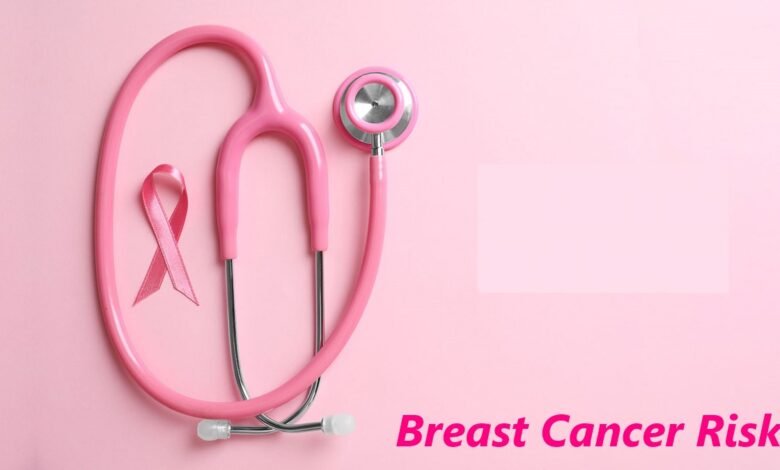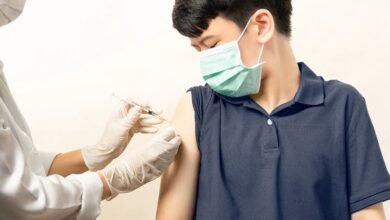Best Unveiling Hidden Breast Cancer Risk Factors 2023

Breast cancer is a complex disease that affects numerous women worldwide. It is essential to be aware of the known risk factors, such as age, family history, and genetic mutations. However, in addition to these well-established factors, there are several hidden risk factors that deserve attention. By understanding these hidden factors, individuals can take proactive steps to reduce their risk and promote early detection. In this article, we will be unveiling hidden breast cancer risk factors and delve into the importance of early detection and prevention.
Breast cancer is the most common cancer among women globally, accounting for a significant number of cancer-related deaths. It occurs when abnormal cells in the breast tissue grow uncontrollably, forming a tumor. While certain risk factors like age and family history cannot be modified, there are hidden risk factors that individuals can address to minimize their chances of developing breast cancer.
Read More: Breast Cancer Education How Can One Reduce Risk
Genetic Risk Factors
Genes play a crucial role in breast cancer development. Certain gene mutations, such as BRCA1 and BRCA2, significantly increase the risk of breast cancer. However, it’s important to note that only a small percentage of breast cancers are caused by these mutations. Other genetic variants, although less well-known, have also been associated with an increased risk of breast cancer.
Hormonal Risk Factors
Hormonal factors can influence breast cancer risk. Women who experience early onset of menstruation and late menopause have a higher risk of developing breast cancer. The use of hormone replacement therapy (HRT) and long-term use of birth control pills have also been linked to an increased risk. It is crucial to discuss the potential risks and benefits of hormonal interventions with a healthcare professional.
Lifestyle Risk Factors
Certain lifestyle choices can impact breast cancer risk. A sedentary lifestyle and lack of physical activity have been associated with a higher incidence of breast cancer. Additionally, excessive alcohol consumption and smoking have been linked to an increased risk. Making positive lifestyle changes, such as engaging in regular exercise and avoiding harmful habits, can help reduce the risk of breast cancer.
Environmental Risk Factors
Environmental factors can contribute to breast cancer risk. Prolonged exposure to radiation, such as during medical treatments or occupational hazards, can increase the likelihood of developing breast cancer. Certain chemicals found in everyday products and pollutants in the air and water have also been associated with an elevated risk. Awareness of potential environmental risk factors can help individuals minimize their exposure.
Dietary Risk Factors
Diet plays a significant role in breast cancer risk. High-fat diets and obesity have been linked to an increased likelihood of developing breast cancer. On the other hand, a balanced diet rich in fruits and vegetables provides essential nutrients and antioxidants that may help reduce the risk. Choosing a healthy and nutritious diet is crucial for maintaining overall well-being and lowering the risk of breast cancer.
Reproductive Risk Factors

Reproductive history can affect breast cancer risk. Women who have never been pregnant (nulliparity) or had their first pregnancy at a later age have a higher risk. Conversely, breastfeeding has been shown to have a protective effect against breast cancer. Understanding the reproductive risk factors associated with breast cancer allows women to make informed decisions regarding family planning and breastfeeding.
Socioeconomic Risk Factors
Socioeconomic factors can impact breast cancer risk. Individuals with a lower socioeconomic status often face disparities in accessing healthcare services and early detection measures. Additionally, stress and psychological factors related to socioeconomic status can contribute to an increased risk of breast cancer. Addressing these disparities and promoting equal access to healthcare is essential for reducing breast cancer incidence.
Hidden Risk Factors
In addition to the well-known risk factors, there are hidden risk factors that are often overlooked. For example, night shift work has been associated with an increased risk of breast cancer due to disruption of the circadian rhythm. Exposure to certain types of light at night, such as blue light from electronic devices, may also influence breast cancer risk. Raising awareness about these hidden risk factors can empower individuals to make informed lifestyle choices.
Preventive Measures
Prevention and early detection are key in combating breast cancer. Regular breast cancer screening, including self-examinations and mammograms, can help detect any abnormalities at an early stage. Lifestyle modifications such as engaging in regular exercise, maintaining a healthy weight, and adopting a balanced diet can also significantly reduce the risk of developing breast cancer. By taking proactive steps, individuals can improve their overall health and lower their breast cancer risk.
Conclusion
Understanding and addressing hidden risk factors is crucial for effective breast cancer prevention. By unveiling these factors, individuals can make informed choices and take proactive steps to reduce their risk. It is essential to prioritize regular breast cancer screenings, maintain a healthy lifestyle, and be aware of both well-known and hidden risk factors. By doing so, we can collectively strive toward a future where breast cancer is no longer a prevalent threat to women’s health.
Read More: 7 Essential Tips for Breast Cancer Prevention in 2023
FAQs
Can breast cancer be prevented?
Breast cancer cannot be entirely prevented, but there are steps individuals can take to reduce their risk. Maintaining a healthy lifestyle, undergoing regular screenings, and being aware of risk factors can significantly lower the likelihood of developing breast cancer.
How often should I undergo breast cancer screening?
It is recommended that women undergo regular mammograms starting at the age of 40. However, the frequency and timing of screenings may vary based on individual risk factors. It is best to consult with a healthcare professional for personalized screening recommendations.
Are all breast lumps cancerous?
No, not all breast lumps are cancerous. Many breast lumps are benign (non-cancerous), such as cysts or fibroadenomas. However, it is essential to consult a healthcare professional if you notice any changes or abnormalities in your breasts.
What should I do if I have a family history of breast cancer?
If you have a family history of breast cancer, it is important to inform your healthcare provider. They may recommend genetic testing or more frequent screenings to assess your personal risk. Early detection and proactive management can be crucial in such cases.
How can I support someone diagnosed with breast cancer?
Supporting someone diagnosed with breast cancer involves offering emotional support, being a good listener, and assisting with practical needs. Being there for them, helping them navigate medical appointments, and offering a helping hand can make a significant difference during their journey.







